25 breathtaking images of the northern lights
Auroras paint the skies in eerie hues of green and blue in these stunning images of the northern lights.
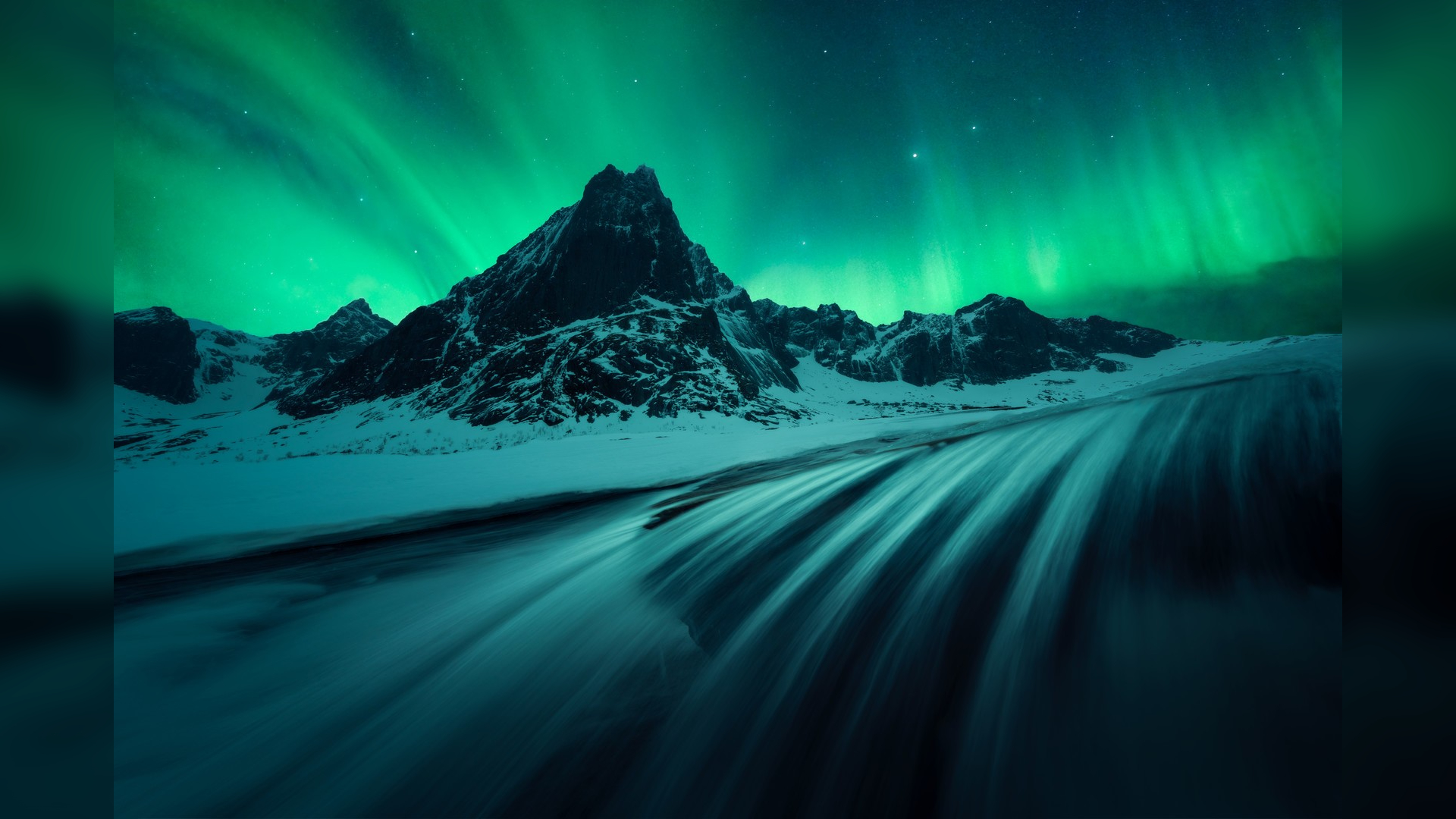
When the nights grow longer and the days grow cooler, the skies in the most northern and southern latitudes may light up in green and blue. These auroras, also known as the northern lights, occur when charged particles streaming from the sun slam into our atmosphere and interact with nitrogen and oxygen molecules. Because these particles are charged, they move in spirals along the planet's magnetic field, migrating toward the poles, where magnetic field lines come together.
The best times to see the northern lights are September through April, while the southern lights, which are most visible in Antarctica but can sometimes be seen as far north as Tasmania, are visible from March to September.
These stunning images of the auroras, taken as part of Capture the Atlas' Northern Lights Photographer of the Year 2022 competition, show the dazzling light shows in all their ghostly glory.
Polaris Dream
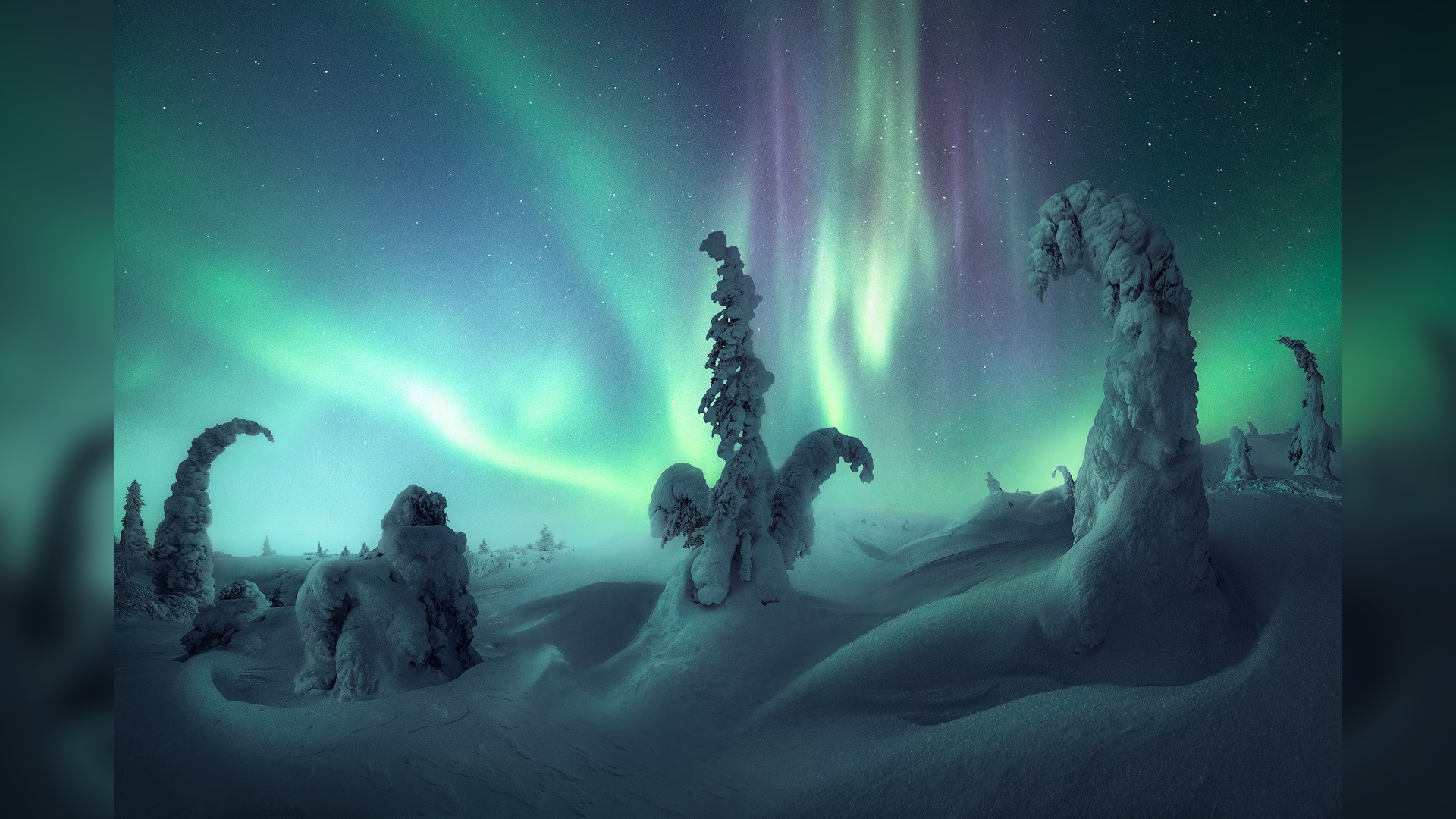
This stunning image, taken by Nico Rinaldi, shows the auroras over Murmansk oblast in northern Russia. The curving trees look like snow monsters, and the lights give them an eerie glow.
Auroraverse
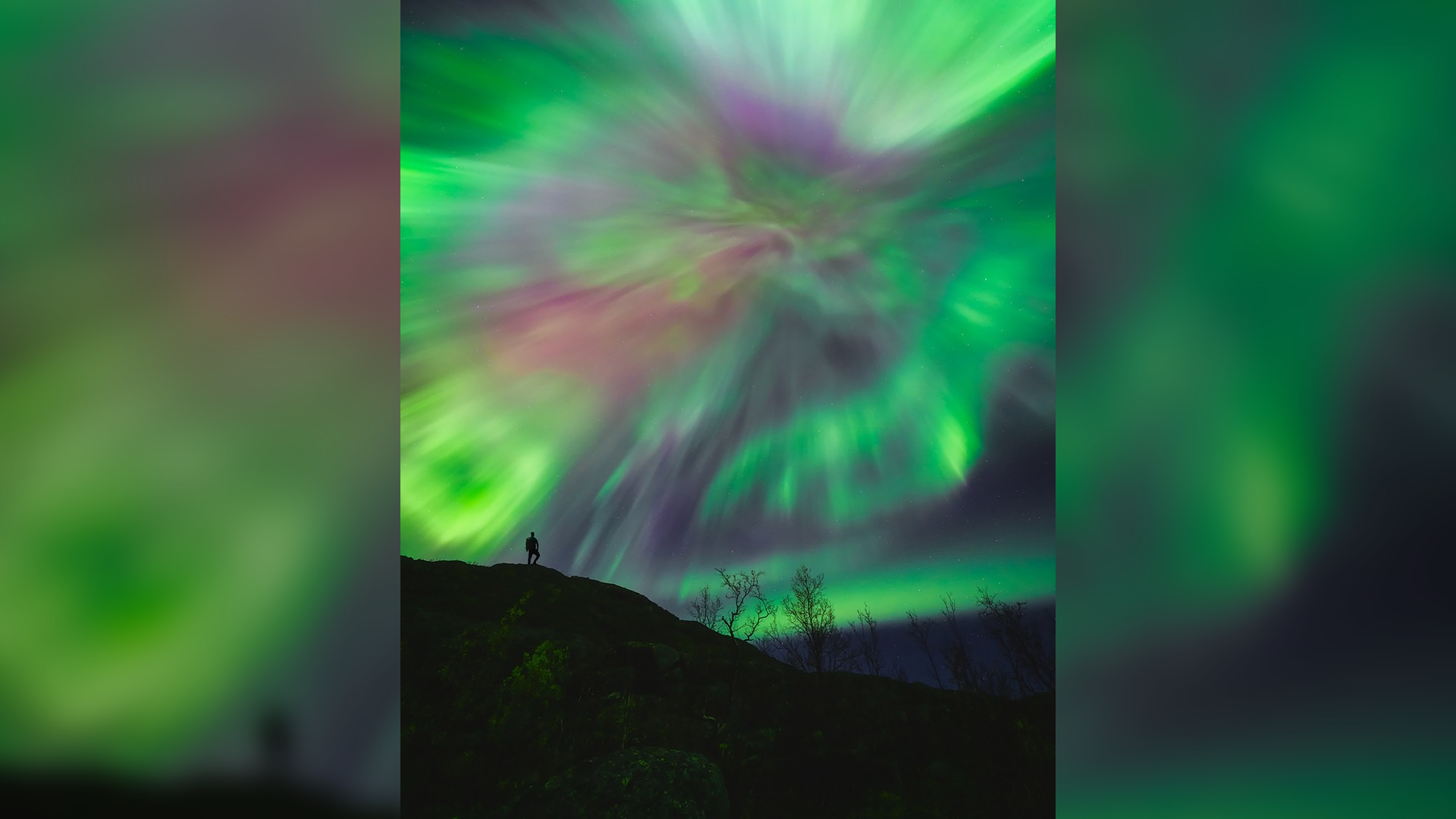
The sky looks like a psychedelic, tie-dye fever dream in this photo, captured by Tor-Ivar Næess, of the northern lights sparkling over Nordreisa, Norway. Setting up a photo like this is tricky, even for a seasoned photographer, Næess said.
Elves’ House
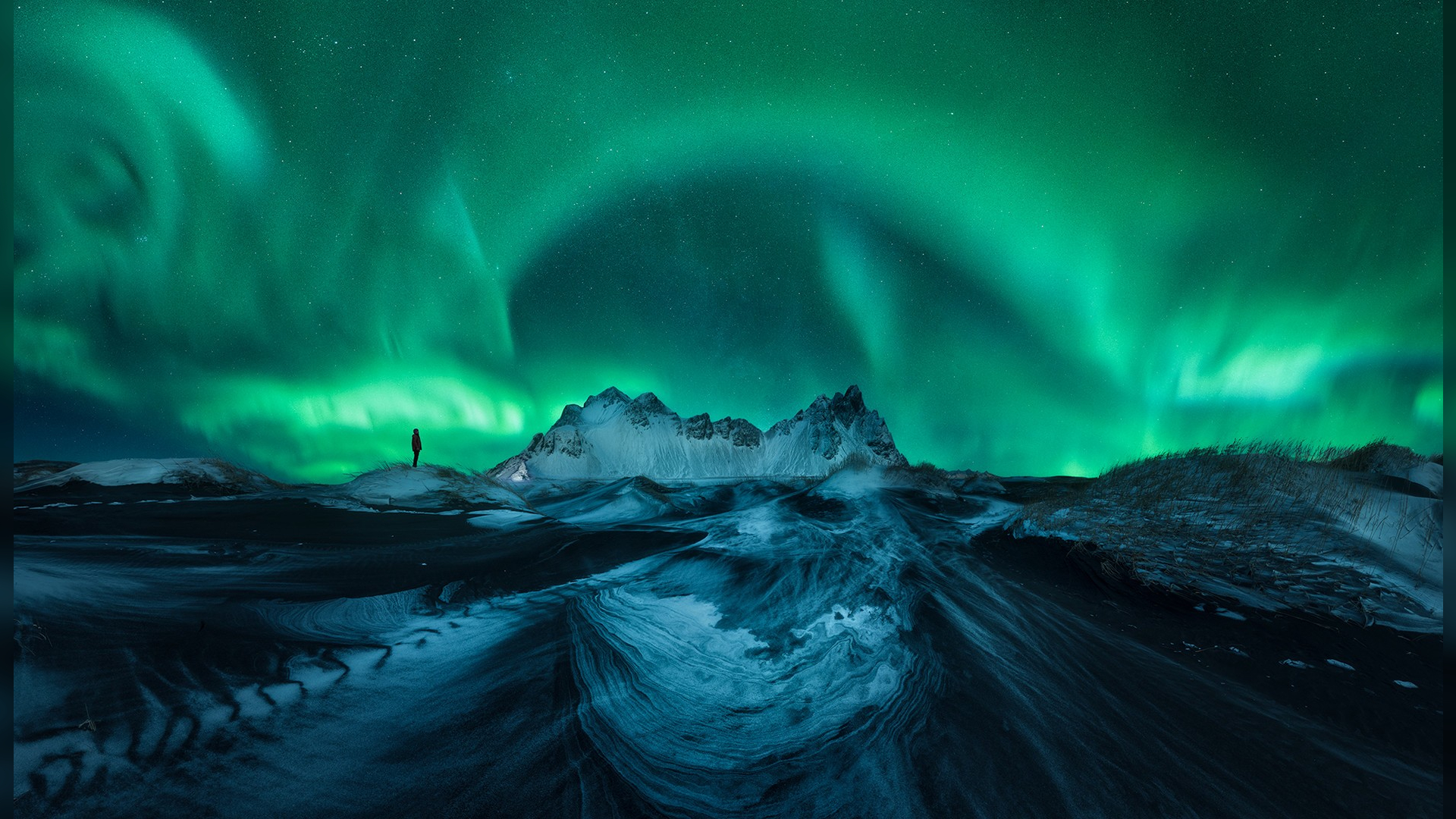
This image of the auroras, taken by Asier López Castro in Stokksnes, Iceland, captures a snapshot of an area that's fabled to harbor elves' houses. The foreground, painted in ominous stripes of black and gray, contrasts with the swirls of green and aqua dancing across the sky.
Nordic Quetzal
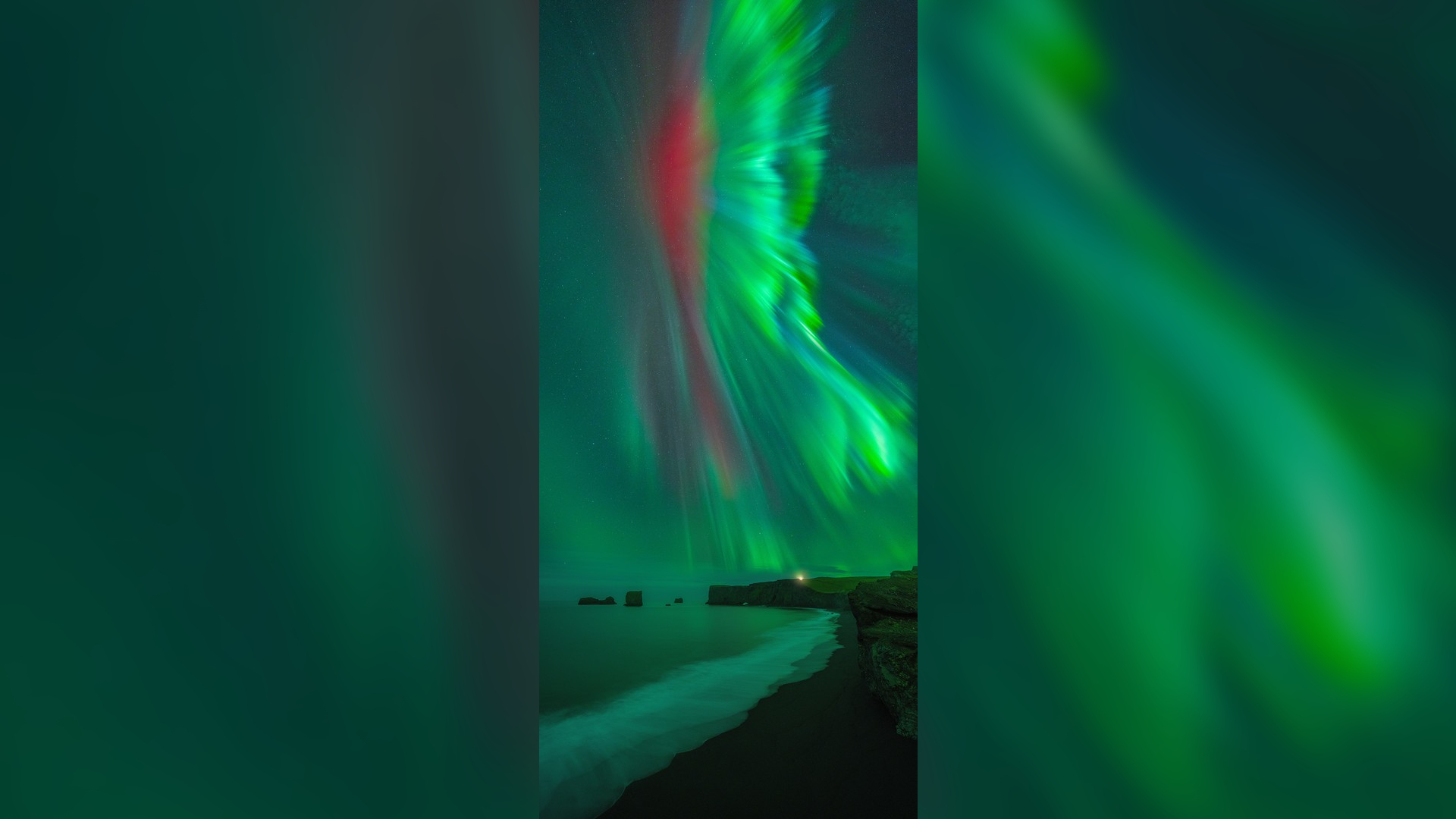
Luis Solano Pochet captured this photo of the northern lights looking like the mythical Quetzal, a divine bird considered sacred in Mayan and Aztec cultures. The photo was taken in Dyrhólaey, Iceland, after a particularly strong solar storm. Stronger geomagnetic storms cause light displays to occur farther south; the strongest storm on record, the Carrington Event in 1859, fueled auroras as far south as the Caribbean.
Under a Northern Sky
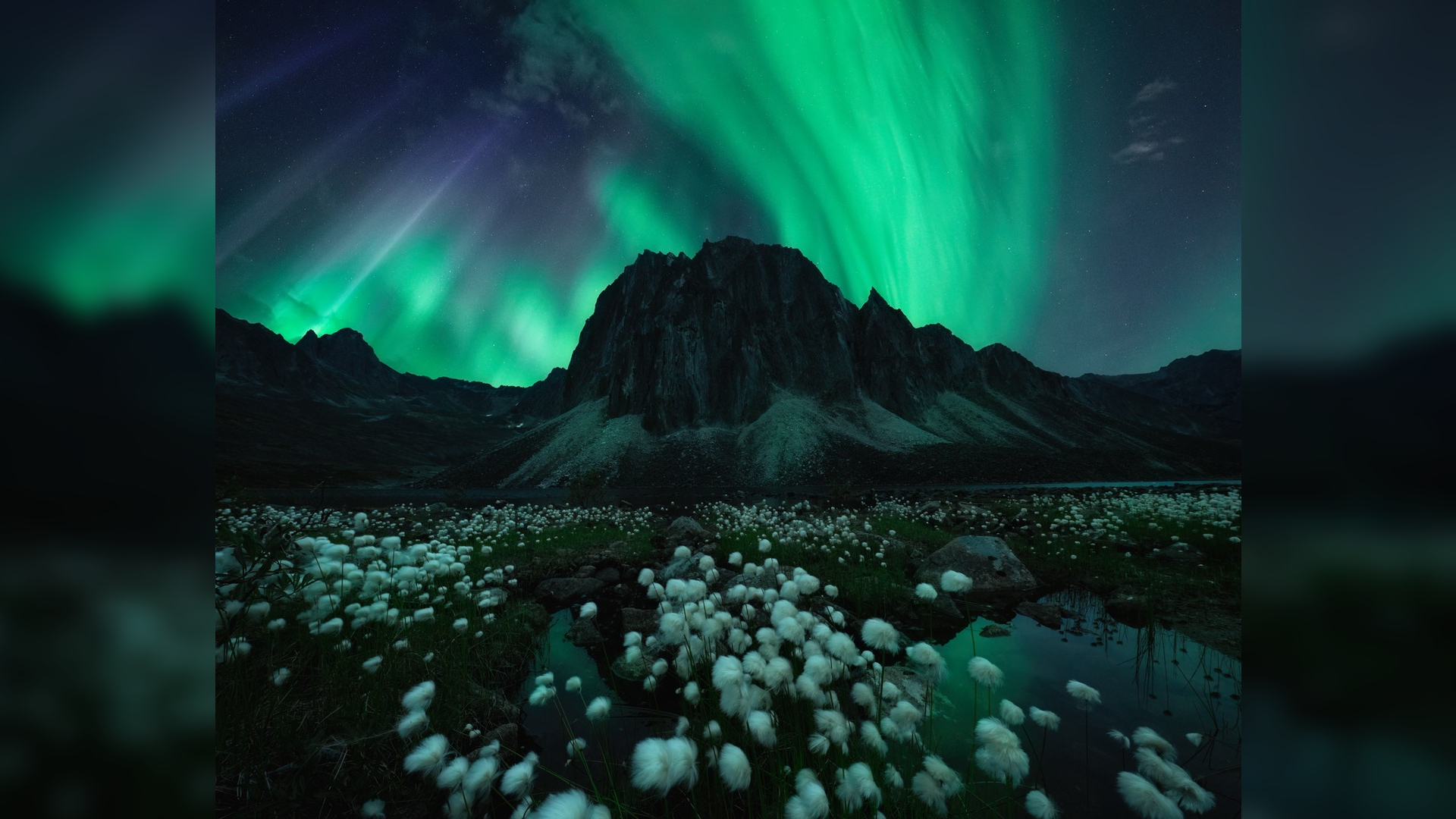
Photographer Rachel Jones Ross captured this image of purple and green auroras streaking above a mountain in Tombstone Mountain Range, Yukon Territory, Canada. The photo was taken in the land of the midnight sun during a three-to-four-day period in which the moon never rose.
Michigan Night Watch
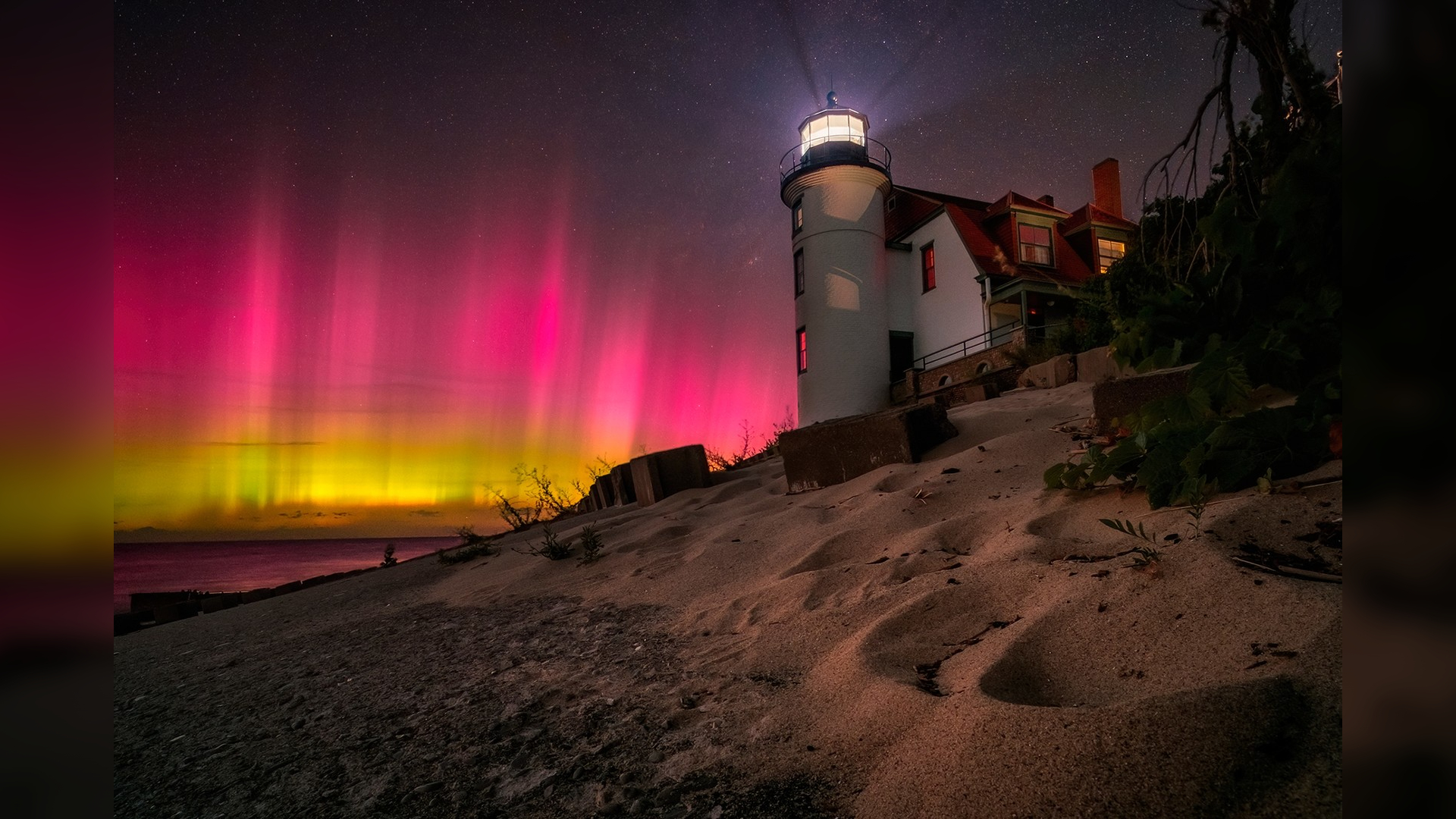
Photographer Marybeth Kiczenski captured this stunning image of these pink and yellow auroras at Point Betsie Lighthouse in Frankfort, Michigan. Reddish hues in auroras come from charged particles slamming into and ionizing oxygen molecules very high up in the atmosphere, while yellowish-green occurs when oxygen is ionized lower in the atmosphere.
Nugget Point Lighthouse Aurora
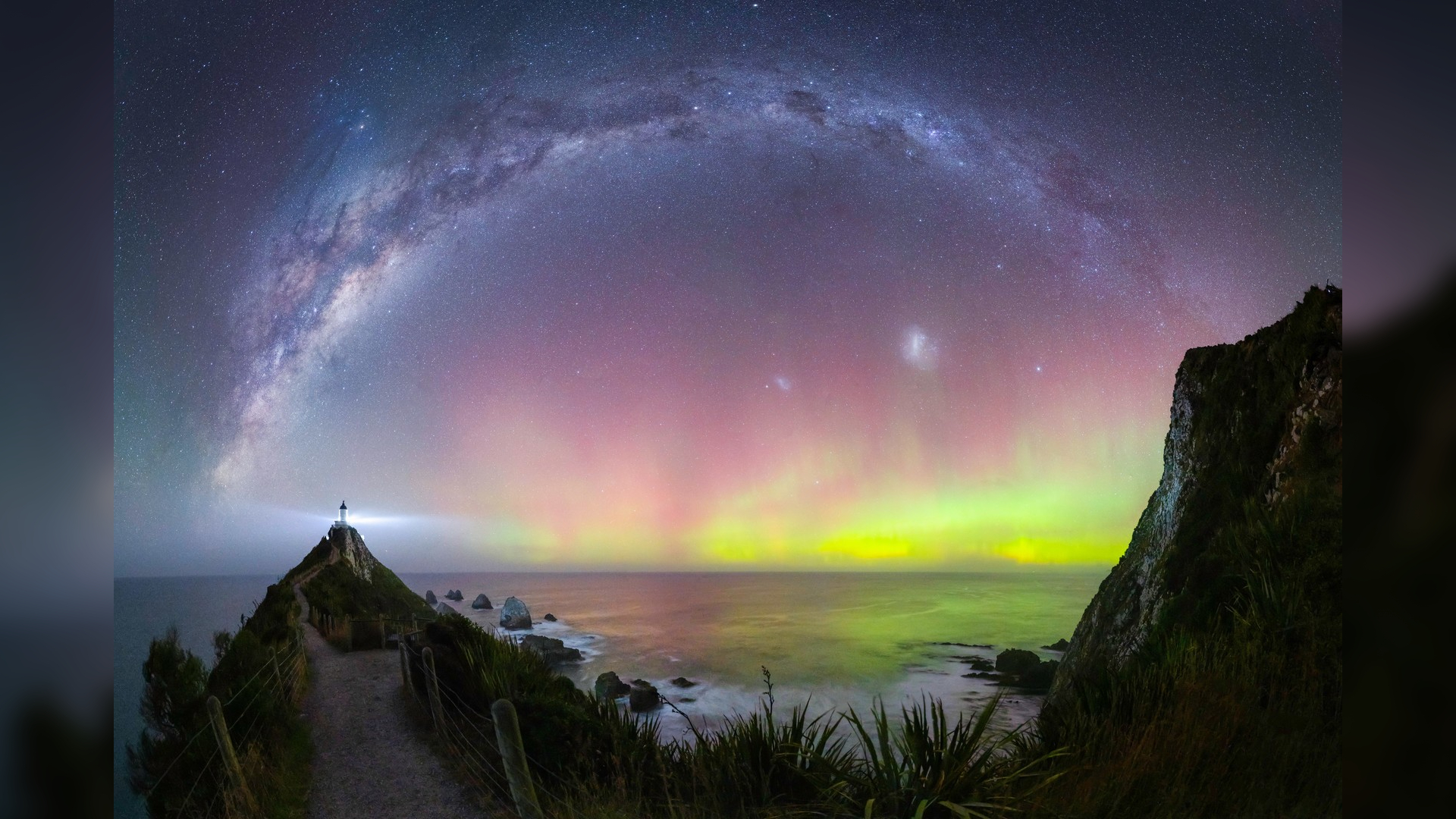
The band of our home galaxy, the Milky Way, makes a cameo appearance in this ethereal photo of the auroras by Douglas Thorne. Nugget Point Lighthouse sits on the eastern side of New Zealand's South Island, and was named by Captain Cook who thought the rocks look like hunks of gold.
Thorne originally planned to photograph the Milky Way, but the Aurora Australis, or southern lights, made a surprise appearance. Scientists once thought the northern and southern lights were mirror images of each other, but new research shows they don't exactly match up, because of asymmetry in the tail of Earth's magnetic field.
Towering Ice
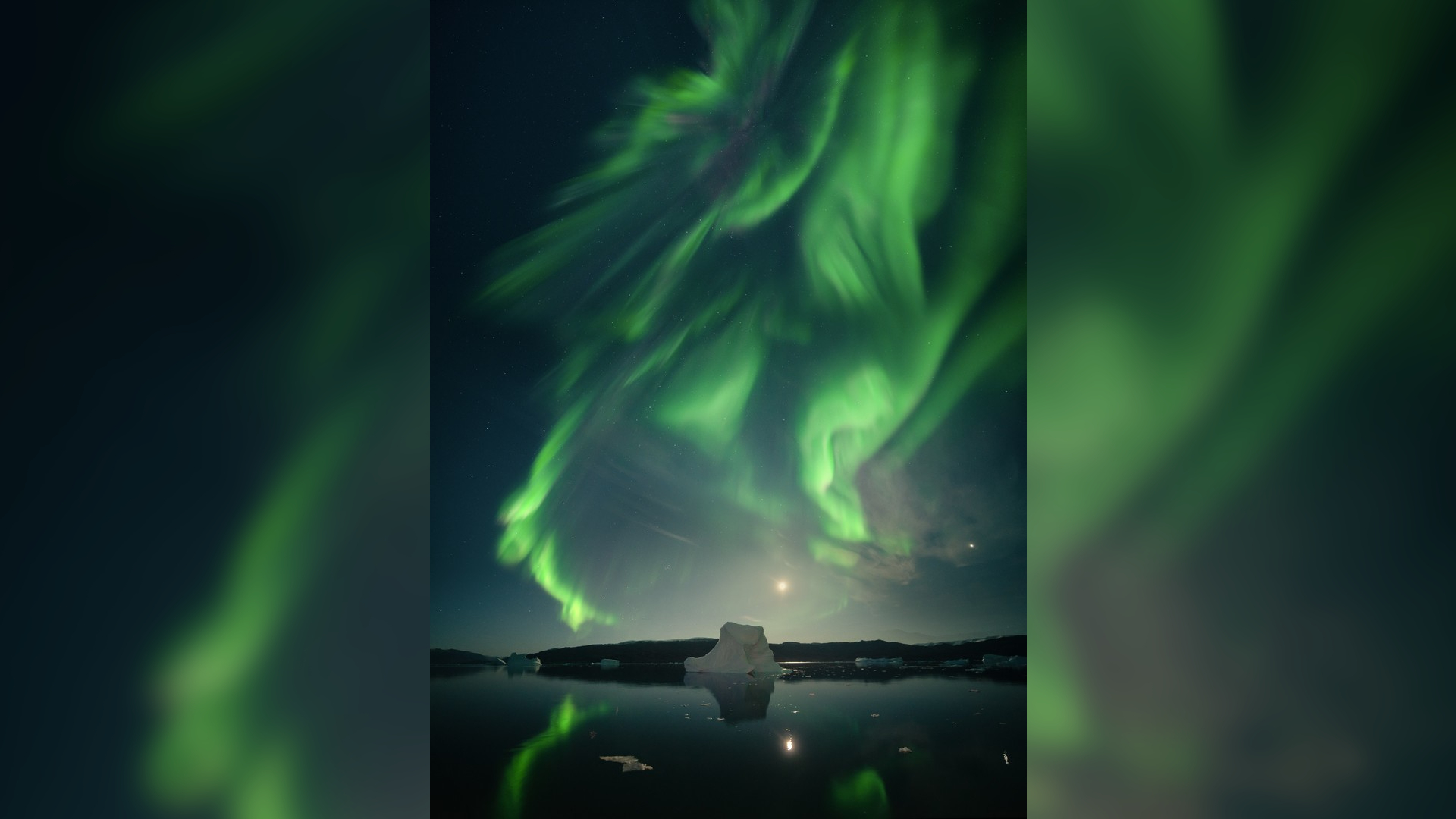
Ghostly green streaks paint the sky in this photograph by Virgil Reglioni in Scoresby Sund, East Greenland. At high latitudes, such as 71 degrees north on the eastern side of Greenland, the aurora oval varies and slightly leans down. The aurora is stronger here than at more southern latitudes due to the tilt of the magnetic north, Reglioni said.
The photo was taken from an icebreaker ship, so the exposure had to be short to avoid blurring the shot with the motion of the water in the fjord.
Magical Forest
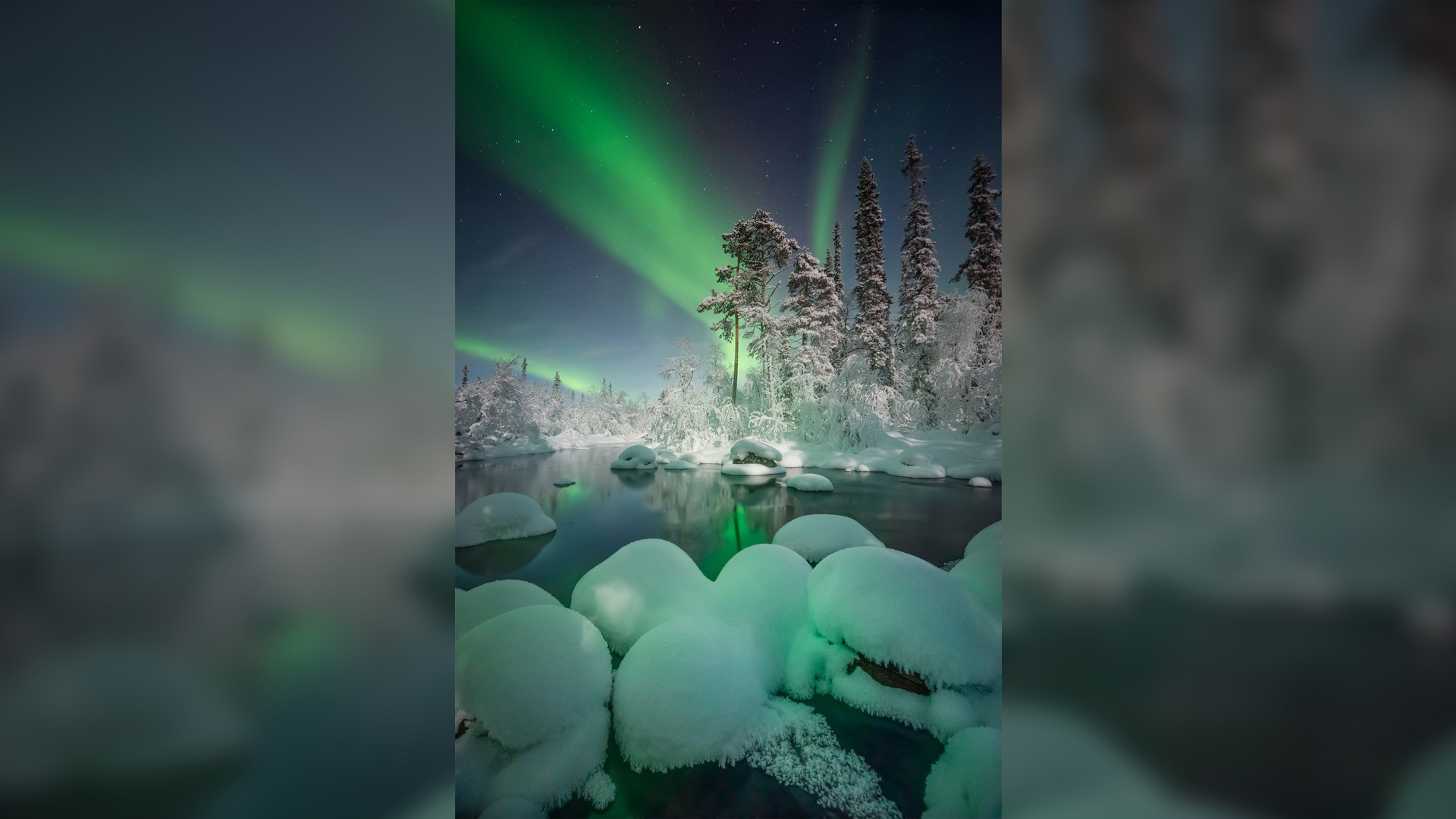
The forest comes alive in this photo of Murmansk, northern Russia taken by Elena Ermolina.
Murmansk experiences 40 days of uninterrupted night during the winter, making it a prime aurora-hunting location.
Inception
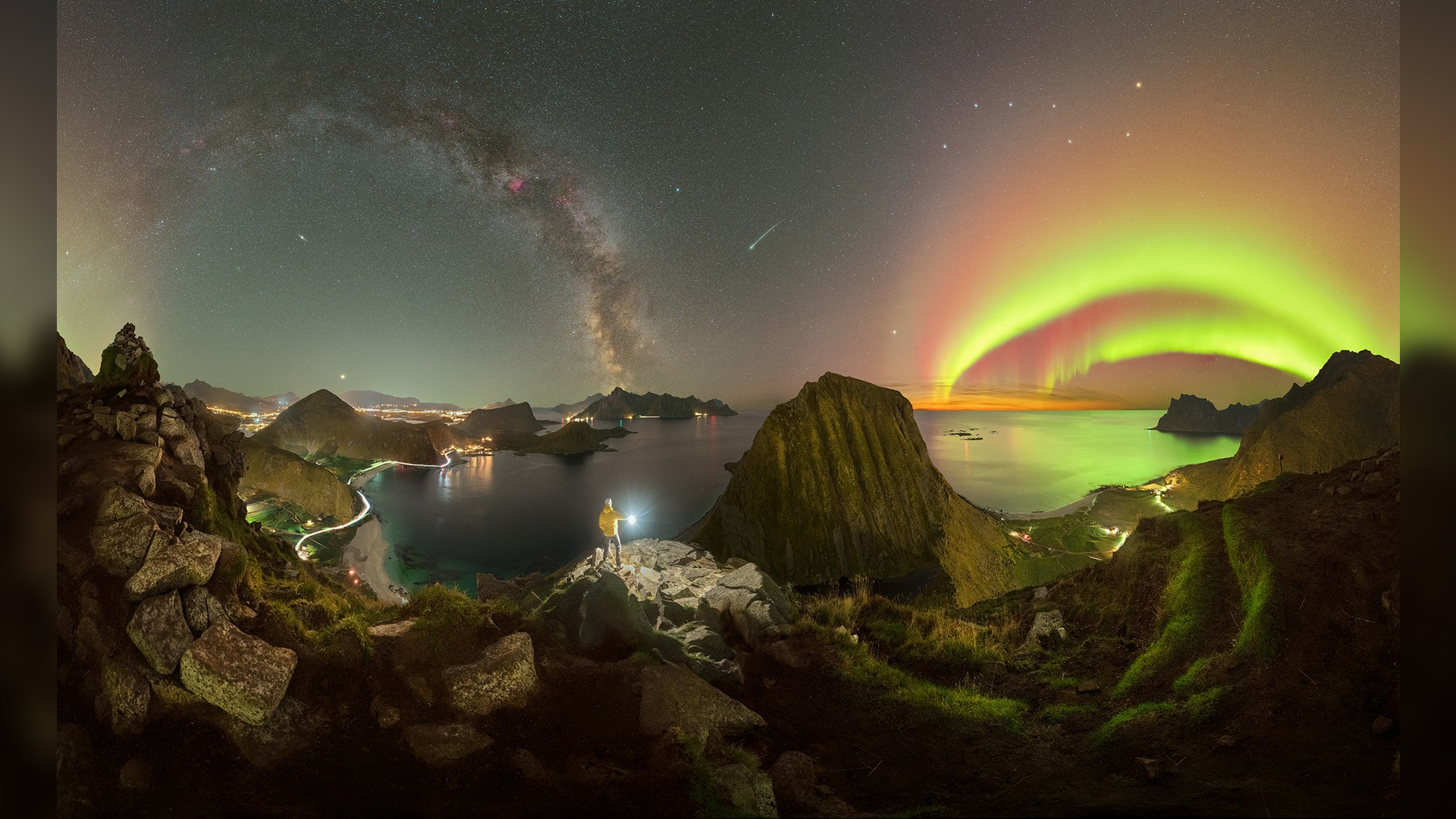
Earth's surface looks like an otherworldly, alien planet in this dreamy photograph by Giulio Cobianchi. The photo captures a double aurora and Milky Way arc over the Lofoten Islands, Norway.
You can see the Andromeda galaxy in the region between the two arcs, along with a shooting star making a guest appearance.
Spirits of Winter
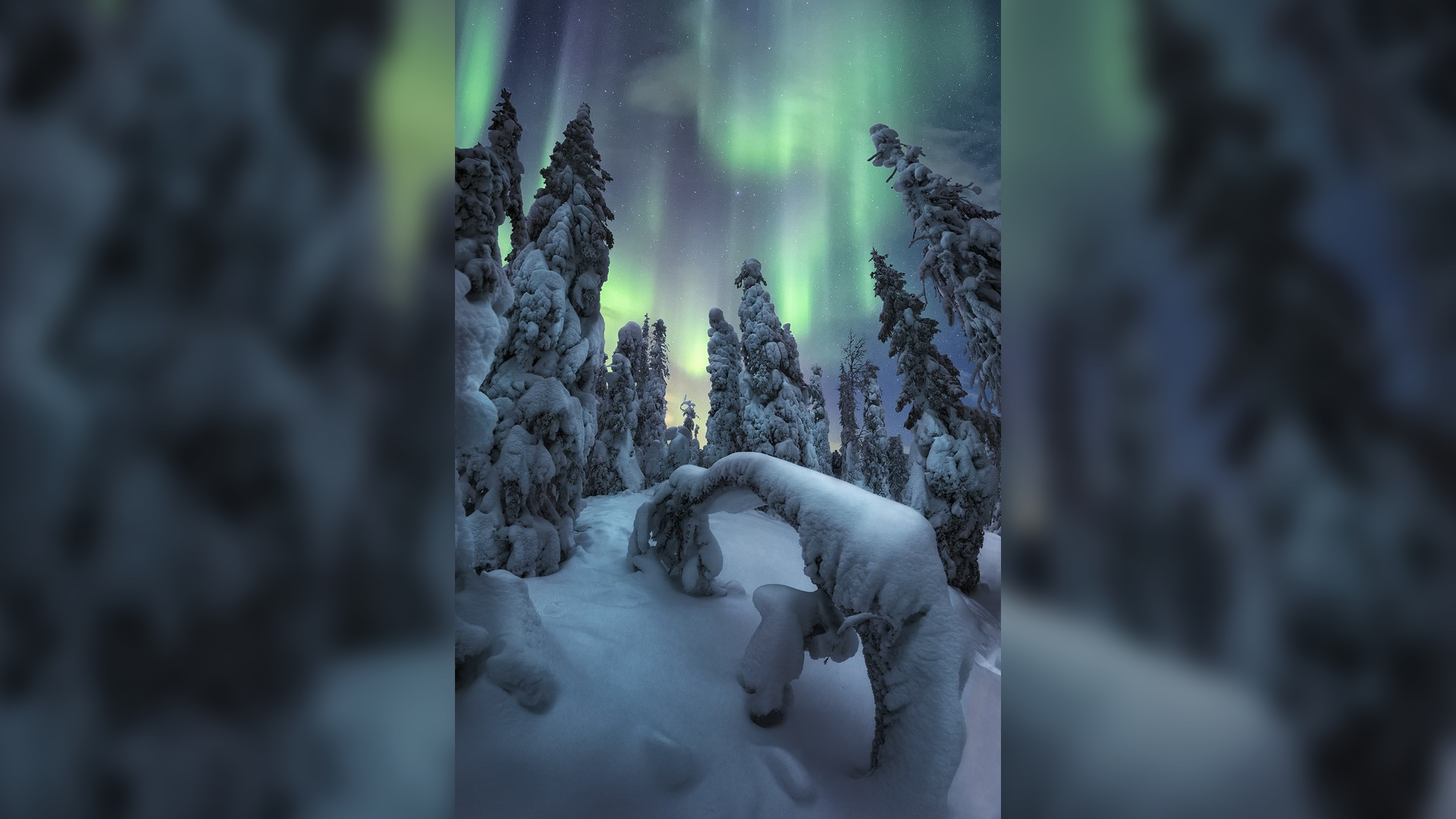
Unai Larraya captured this image of the auroras in Finnish Lapland. The area, part of Riisitunturi National Park, is dense with trees and snow. Stronger solar storms produce more dazzling light shows; this particular one registered a Kp6 on the Kp index, which is used to "characterize the magnitude of geomagnetic storms," according to the National Oceanic and Atmospheric Administration (NOAA). That means this particular case was a moderate geomagnetic storm that produced fairly bright lights.
An Explosion of Color
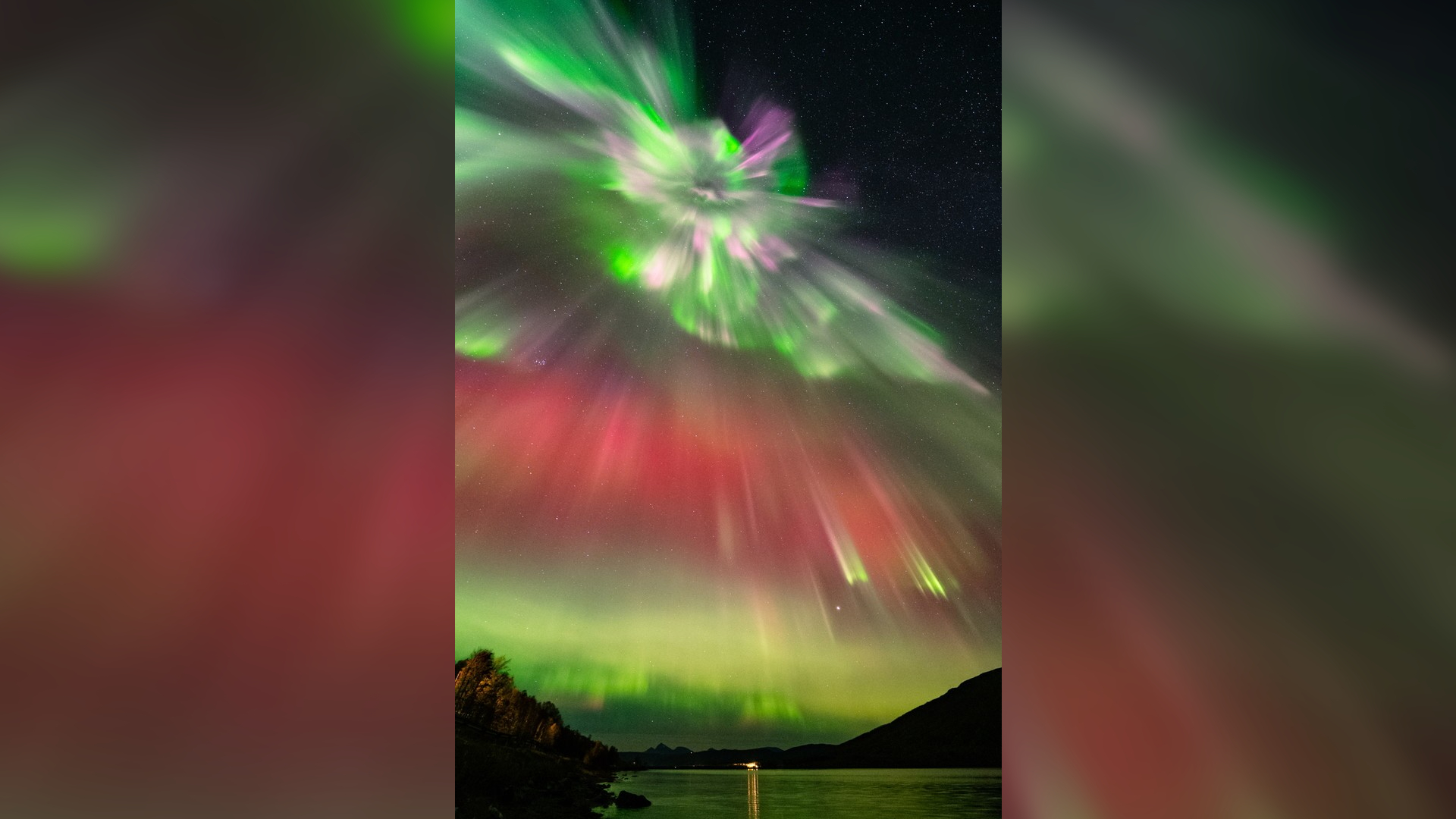
Vincent Beudez captured this image of the auroras over Tromsø, Norway. The dazzling red hue makes the aurora gives the impression of an explosion over the sky.
The Light Upon Kerlaugar
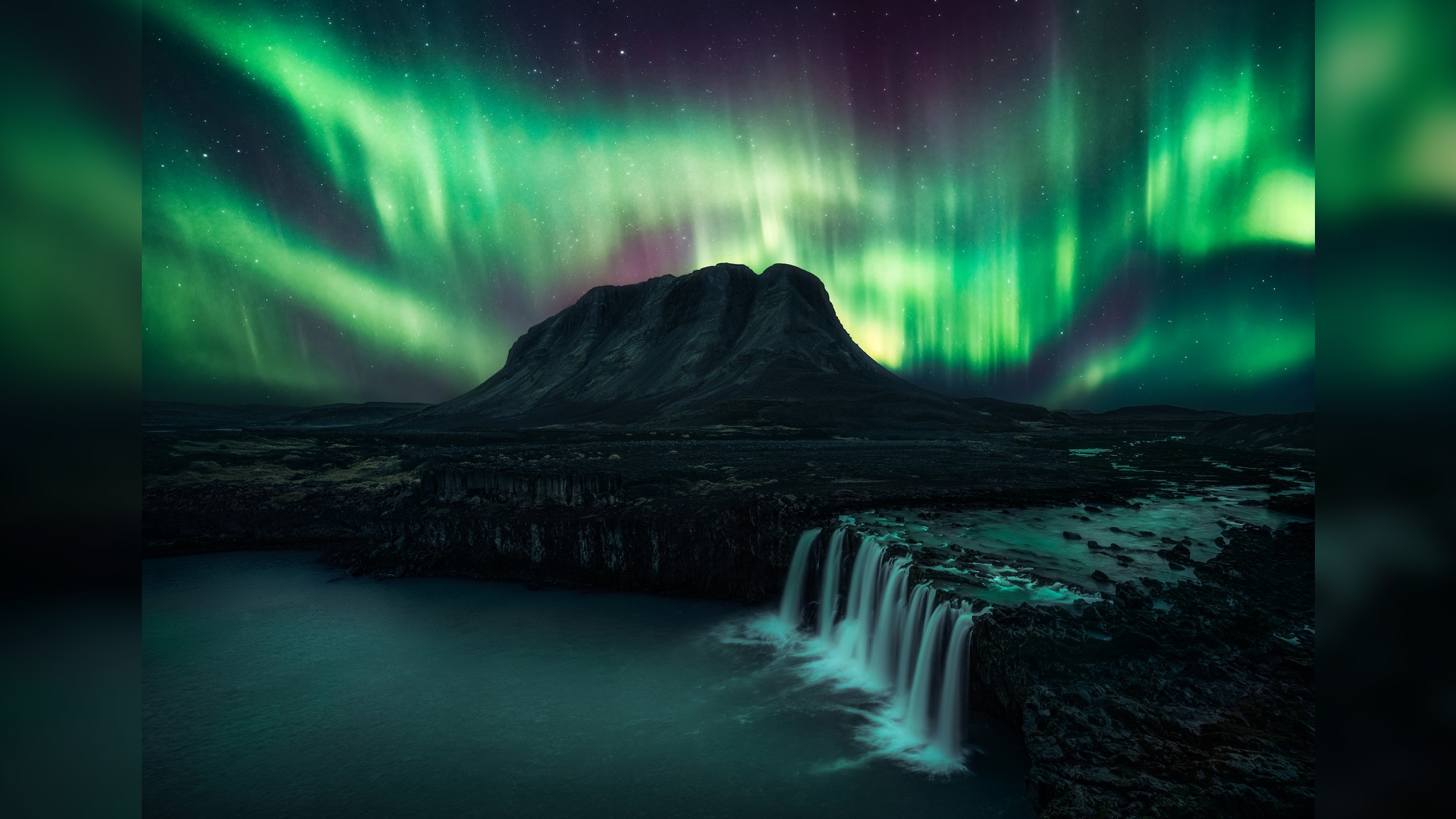
Jannes Krause snapped this image of the northern lights over Suðurland, Iceland. The dazzling purple and green painted the sky thanks to a Kp8 geomagnetic storm, which means a severe, G4-class storm struck the magnetosphere. Stronger storms can paint the skies further south; auroras during such strong storms can be seen as far south as 50 degrees latitude.
Explosions of the Sky
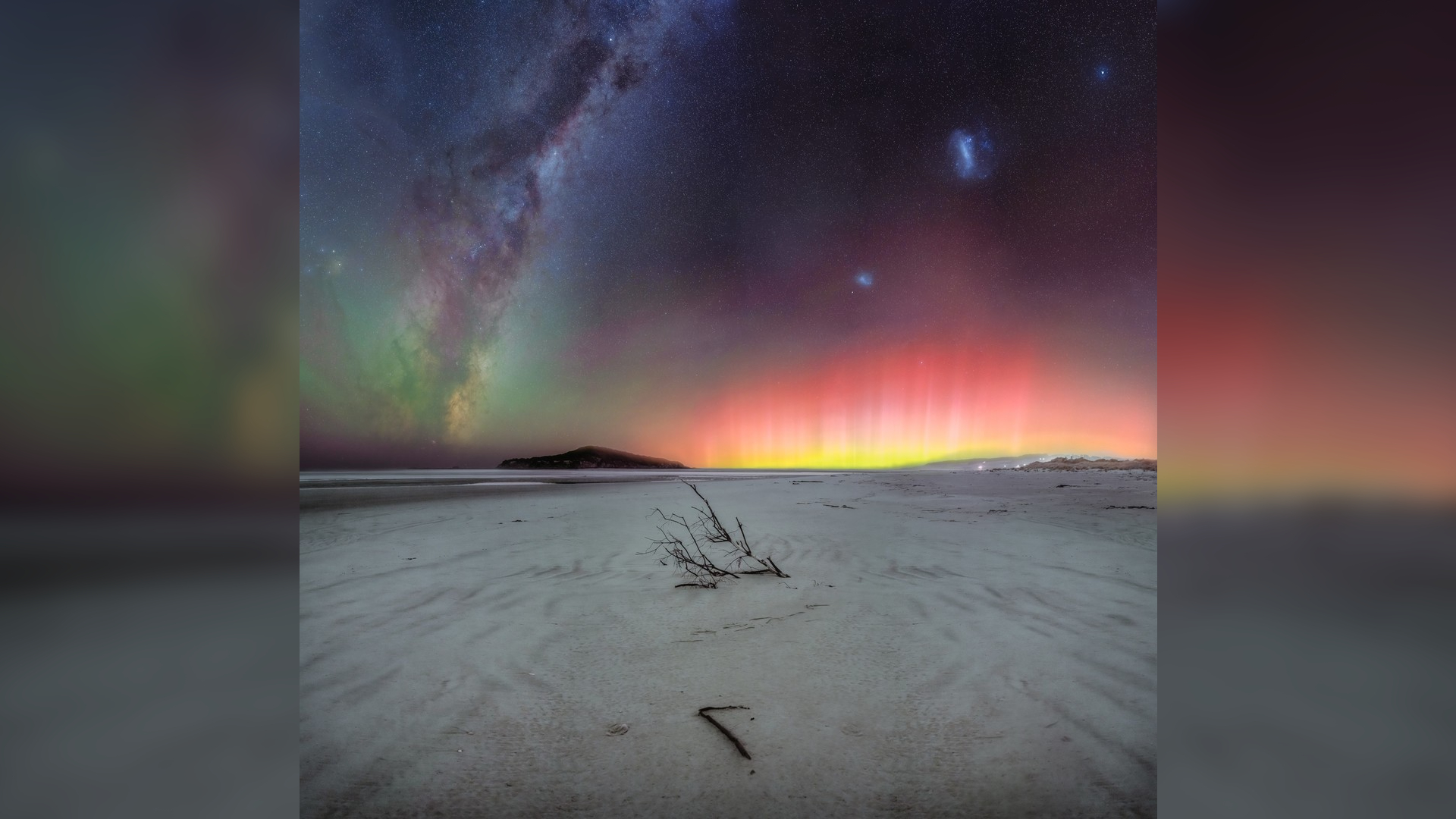
Kavan Chay snapped this otherworldly photograph of the auroras over Taiari beach in Otago, New Zealand.
Because so few people live in the southern latitudes close to the South Pole, dramatic auroras in the Southern Hemisphere aren't witnessed as often as those in the north. On this night, however, Chay lucked out; eerie red and yellow hues lit up the sky, with the Milky Way curving off to the left.
Chasing the Light
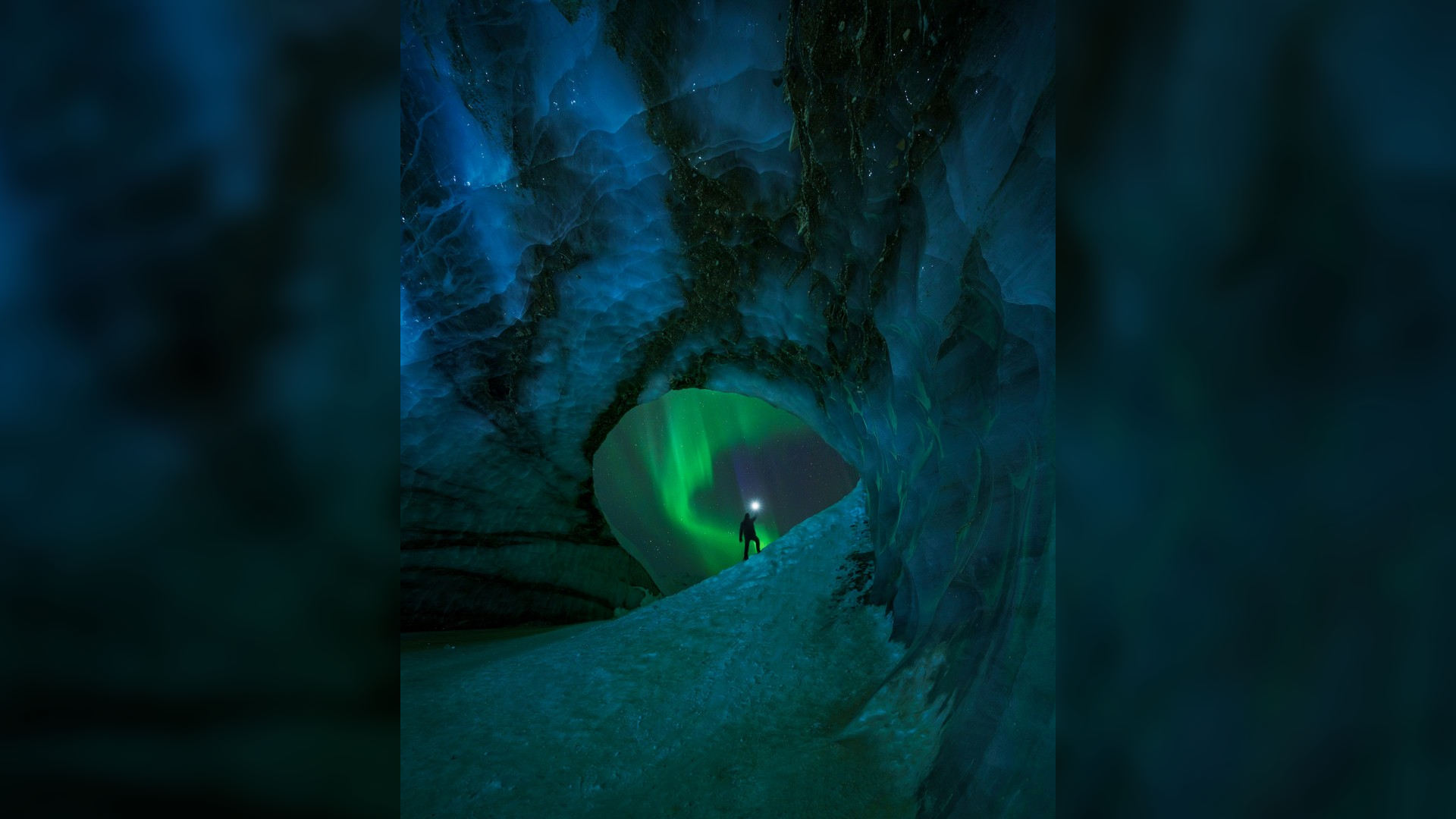
A cracked blue ice cave, alien green light and the ominous outline of a figure in the distance make up this straight-out-of-sci-fi image by David Erichsen. The photo was captured on the Castner Glacier in Alaska. Months after the photo was taken, the ice cave collapsed.
A moderate G2 storm caused by a coronal mass ejection was responsible for the ghostly green seen in the background.
Captain Hook
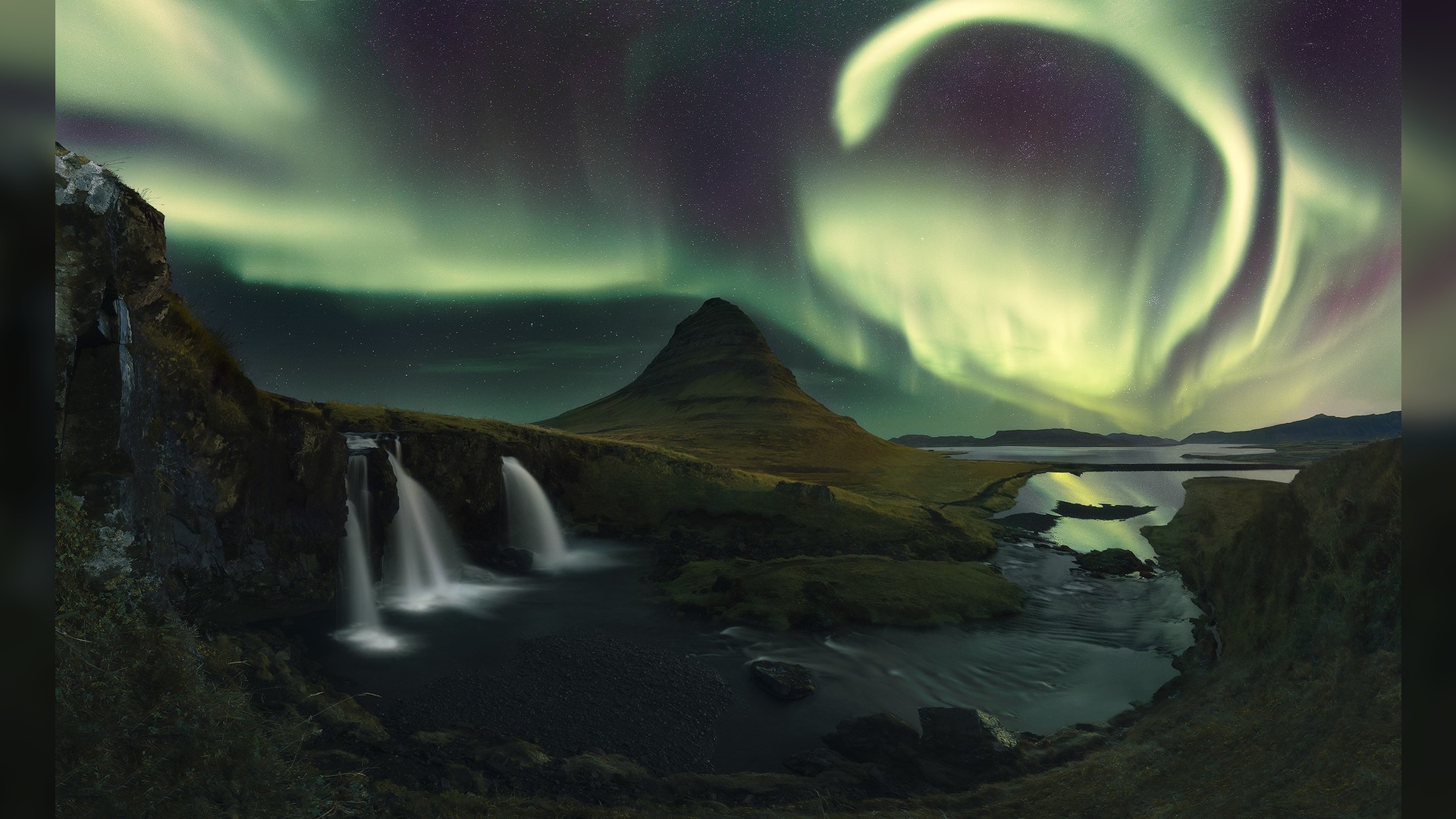
A celestial hook marks the sky in this stark image by Mattia Frenguelli. The photo, snapped in Kirkjufell, Iceland, was captured on the night when a Kp6 storm lit up the sky with dancing auroras. The yellowish-green hue of the hook occurred because oxygen molecules low in the atmosphere were ionized by the solar storm.
The powerful solar storm that was responsible for this light show caused blackouts across India.
Red Skies
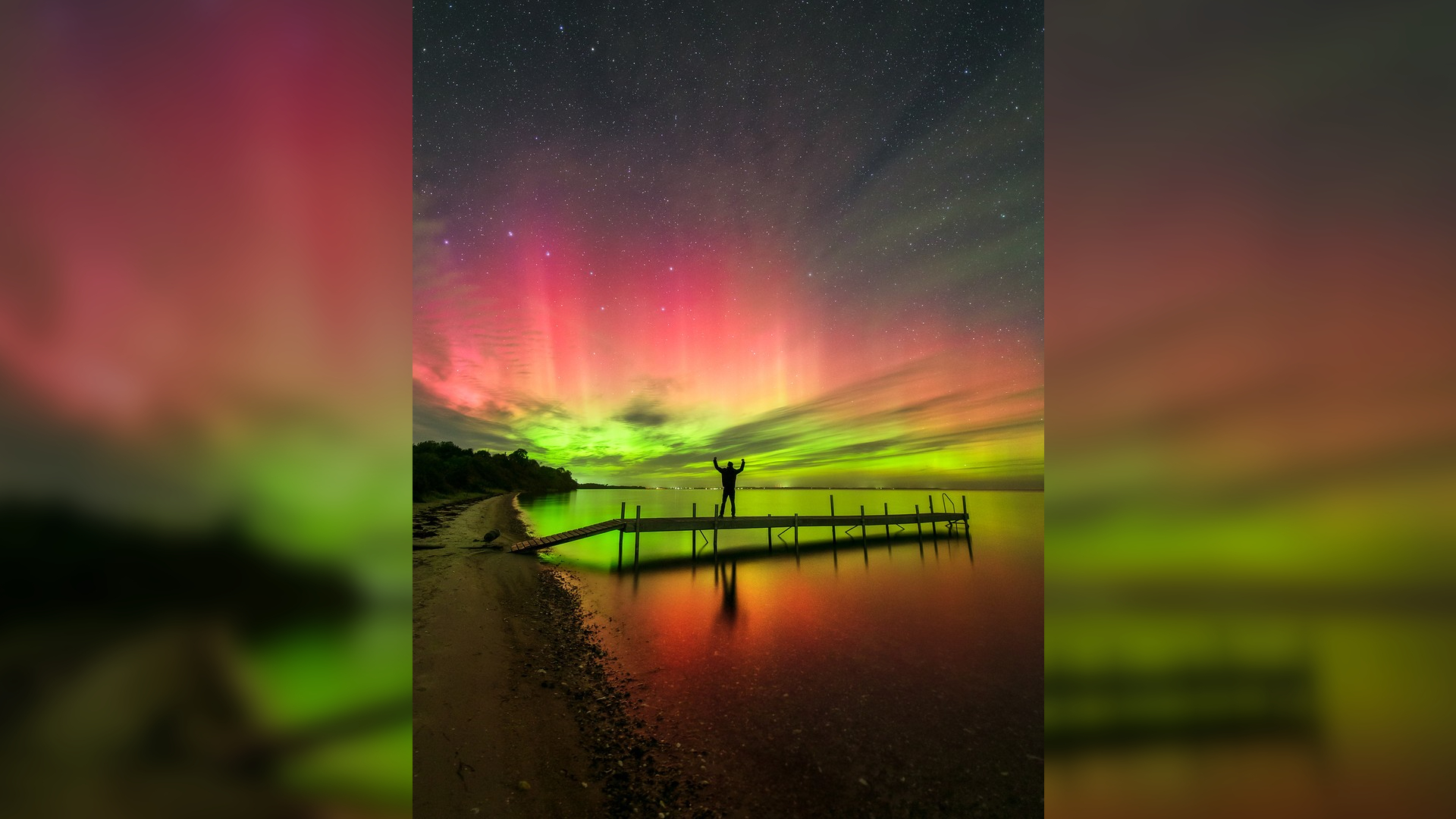
Ruslan Merzlyakov captured this photo of eerie red pillars of light just a few minutes away from his house near Nykøbing Mors, Denmark. Denmark is not a typical destination to see the northern lights, but as this image shows, there's always a chance.
The Fjord Guardian

Filip Hrebenda took this photo of a green and blue landscape in the Lofoten Islands, Norway. That night, a solar storm of Kp5 intensity was forecast, meaning a weak solar storm that causes green colors to dance across the sky.
Storms of such intensity occur roughly 900 days out of the sun's 11-year activity cycle.
Magic Night
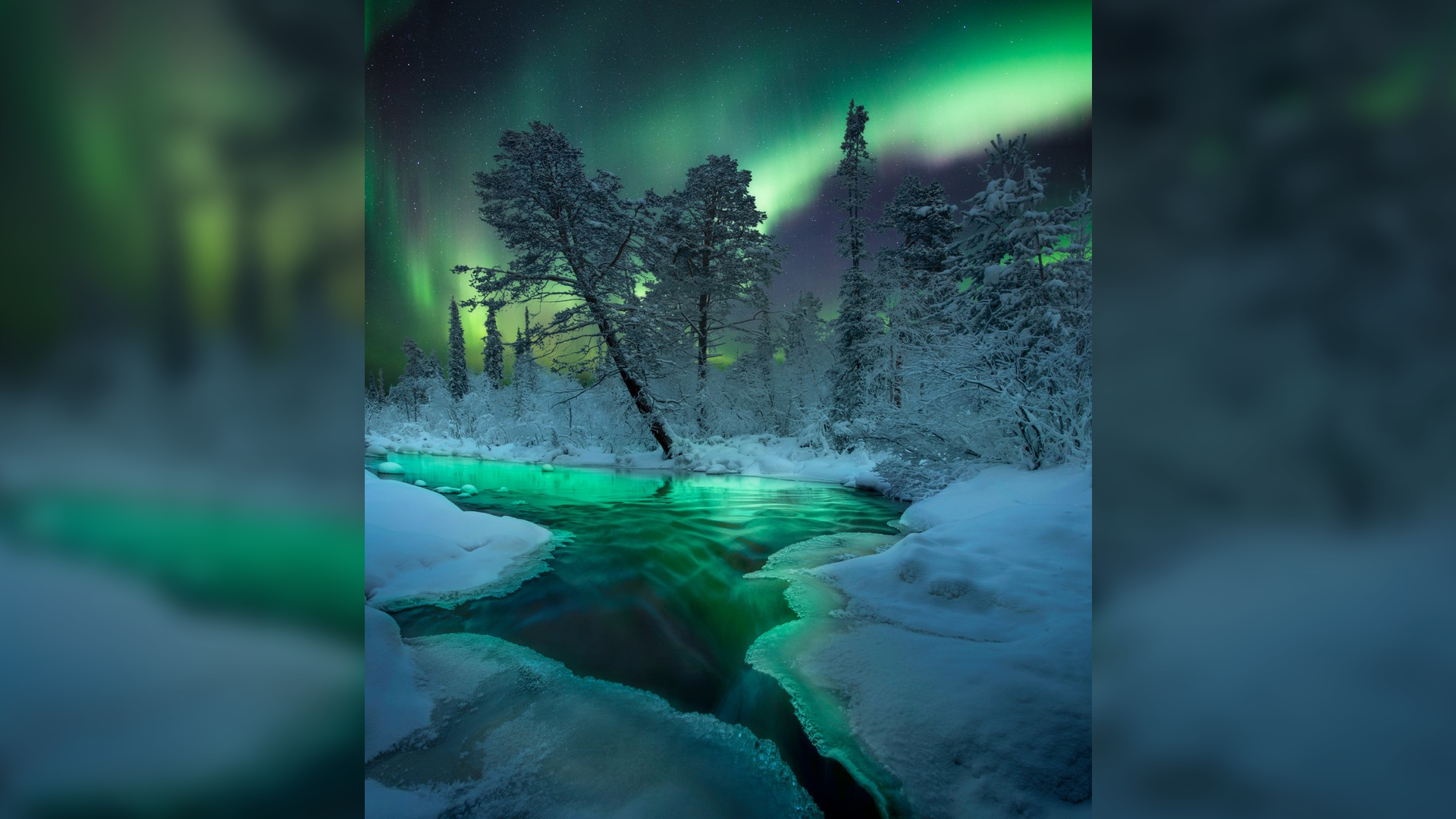
Anastasia and Aleksei R. were responsible for taking this stunning photo of the northern lights over the Kola Peninsula in Russia. The river looks like it's full of radioactive waste, thanks to the neon-green light from the sky.
Emerald Howl
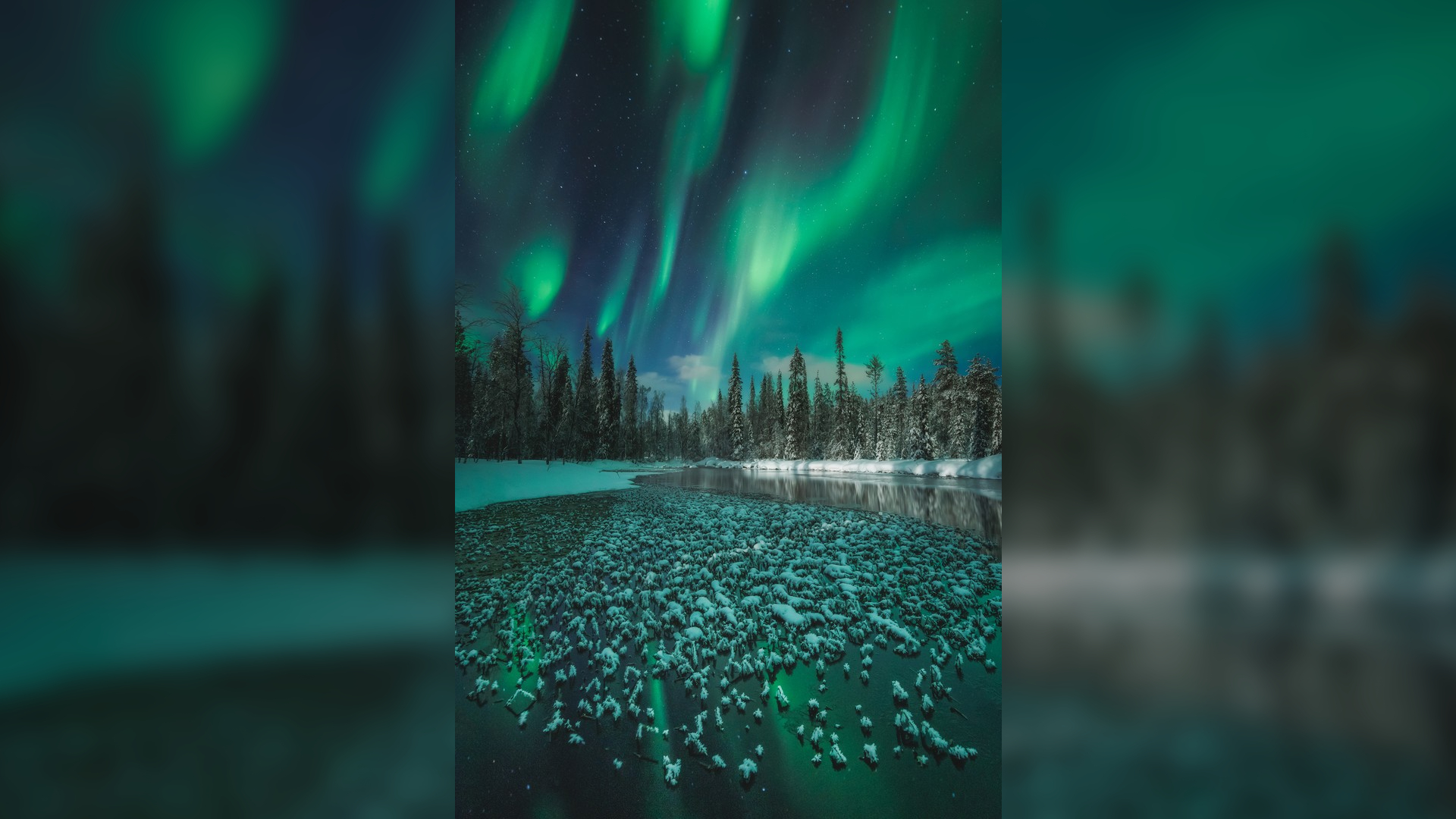
Moonlight and the northern lights worked together to create this evocative image by Itai Monnickendam. The light in the photo, captured in Kolari, north Finland, is almost as bright as daylight thanks to the moon.
Northern Lights Over Dramatic Lofoten Peaks
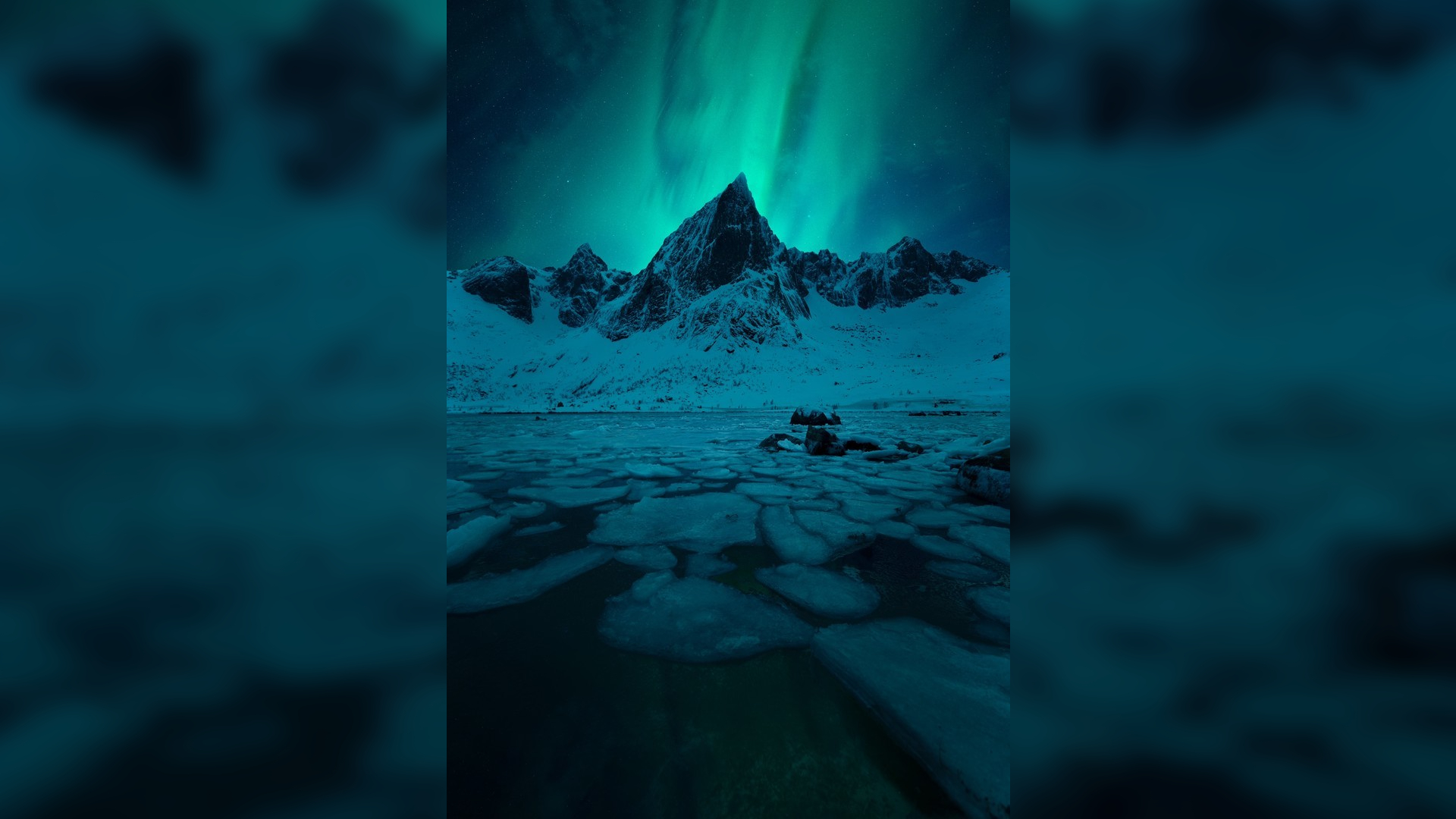
The Lofoten Islands are a favorite spot for aurora chasers. This photo, taken by David Haring, was captured on a day when no geomagnetic activity was predicted. But the auroras decided to make a surprise appearance.
Green Balls
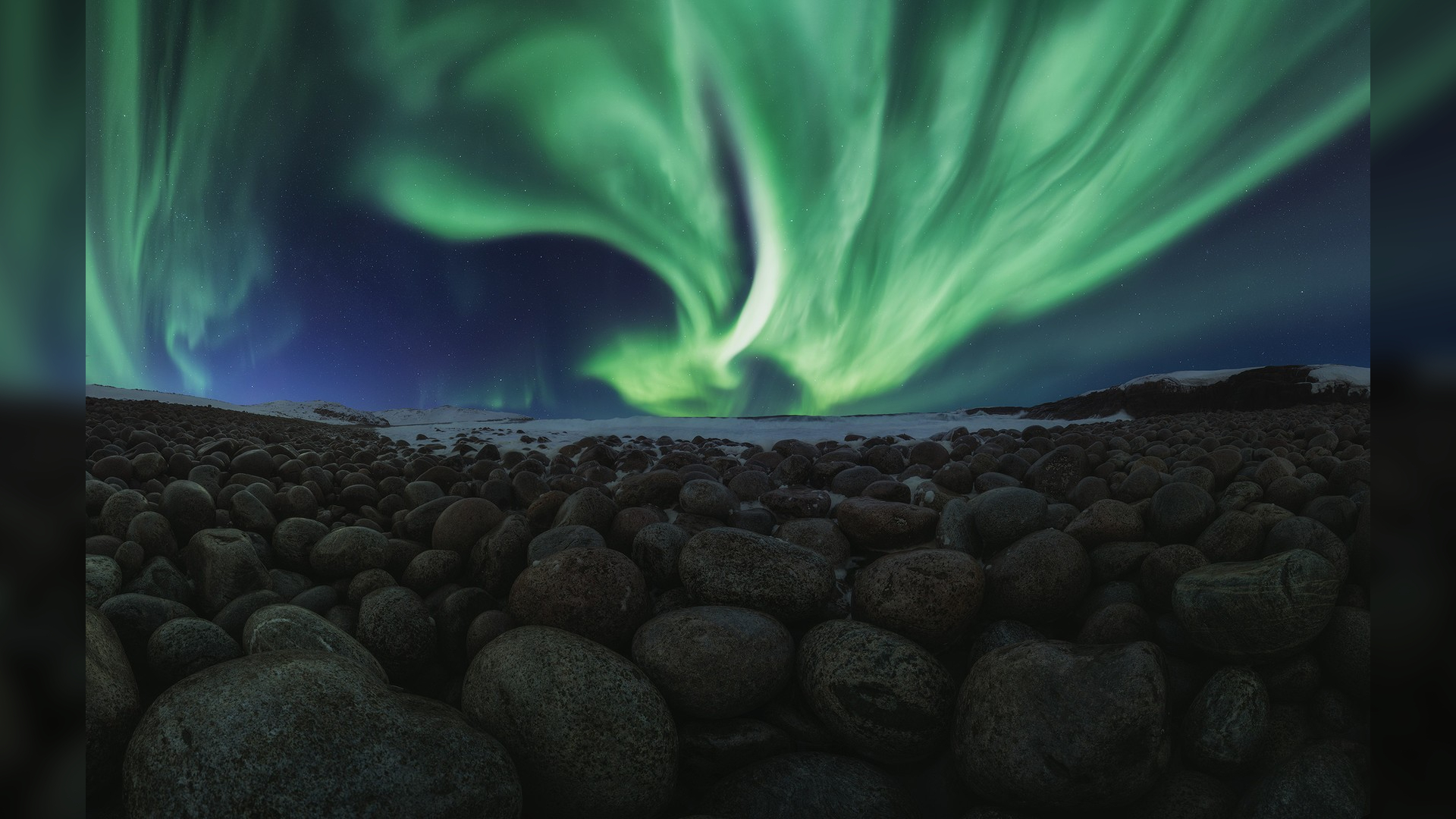
Jose D. Riquelme snapped this photo of a rocky wasteland in Teriberka, Russia. The "Green Lady" made an appearance in streaks of green light that fan out from the center of the tableau, like a luminous bird.
Queen of The North
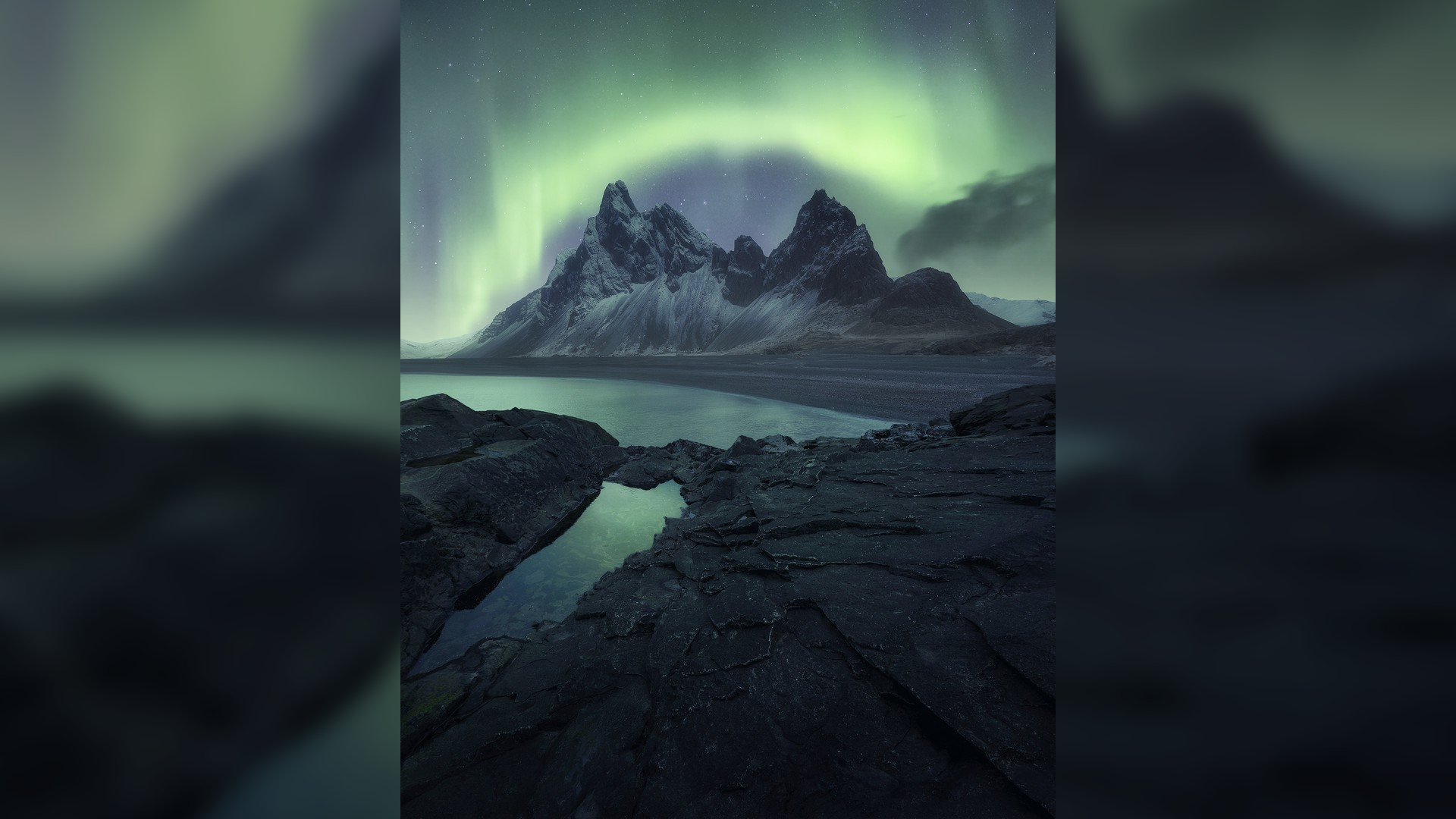
Pierpaolo Salvatore snapped this photo of the northern lights hovering over a snow-studded mountain in Iceland. The island nation's volcanic past is on full display in the foreground, while the magnetic field sheathing our planet makes itself known through the arc of greenish light framing the mountaintop.
Reflections on The Ice
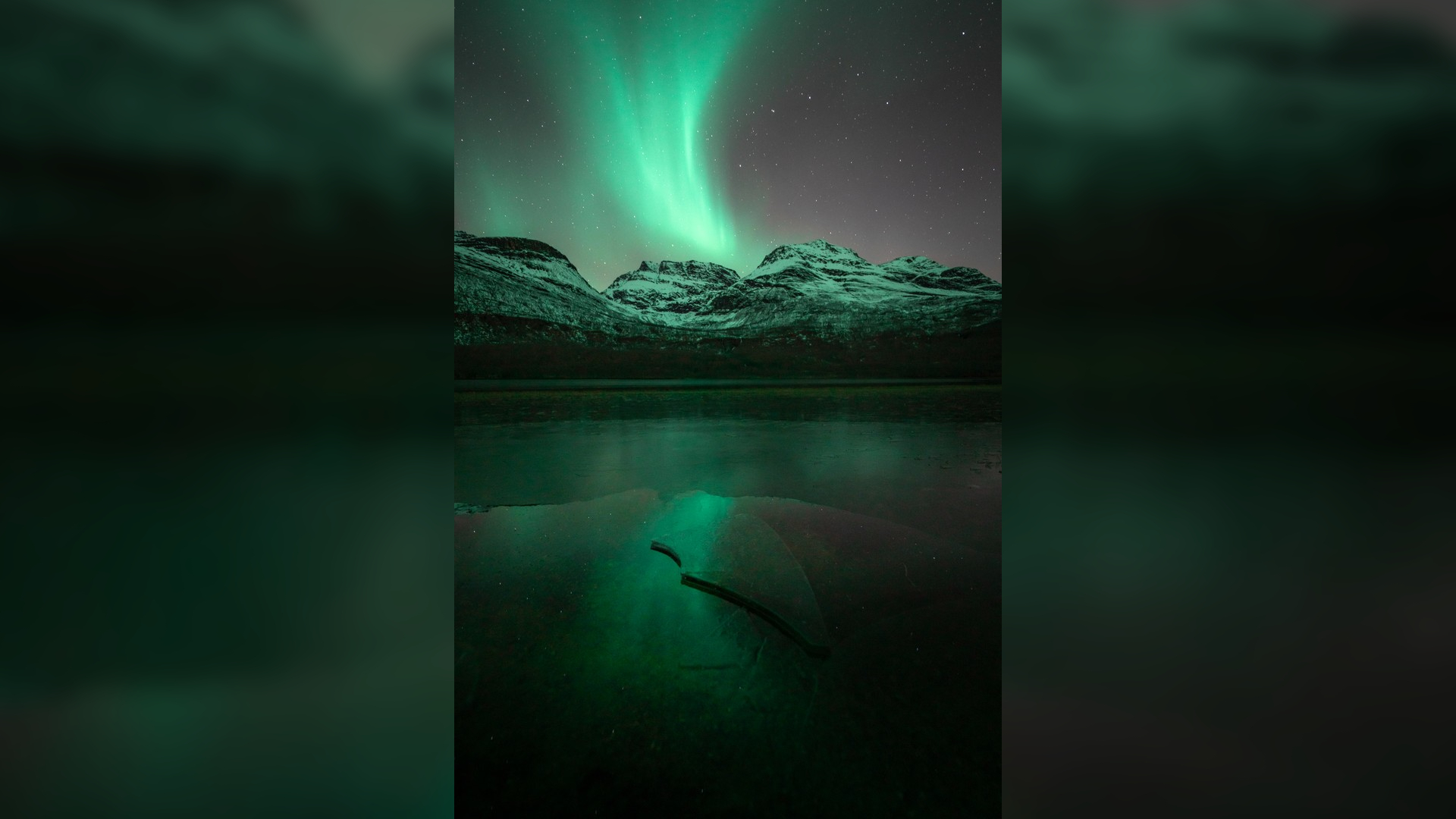
Lena Pettersen took this photo of the green aurora painting the ice above Troms in northern Norway. Green is one of the most common colors of the aurora, because it occurs when nitrogen is ionized — and nitrogen is the most abundant element in our atmosphere.
Bridge to Dreams
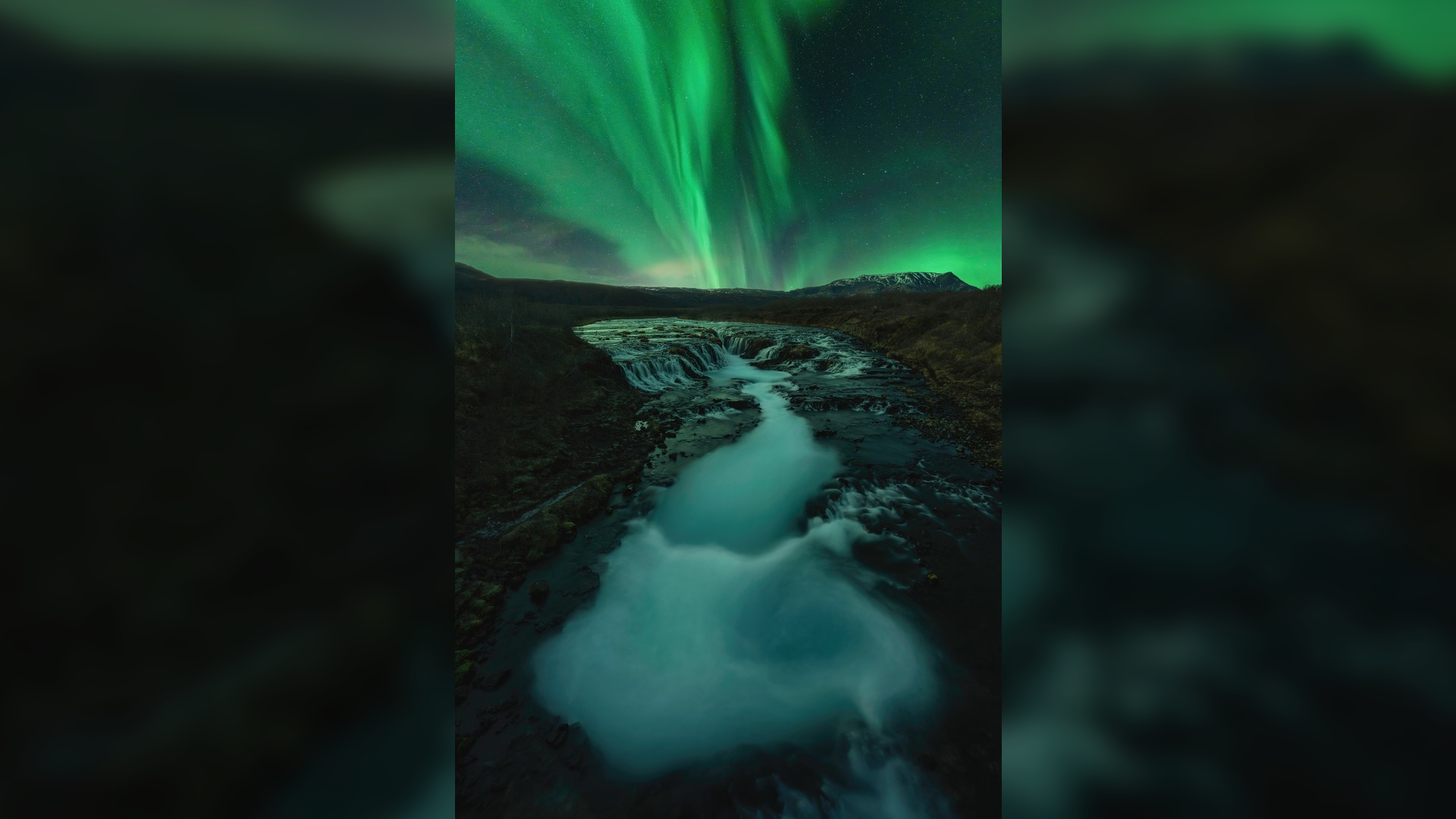
Jabi Sanz took a freezing, 4-mile (6 kilometers) hike from Reykjavík in Iceland to capture this stunning image of the aurora borealis over Brúarfoss.
The image shows the green light of the aurora streaking out from the horizon line, while a misty river flows in the foreground.
Sign up for the Live Science daily newsletter now
Get the world’s most fascinating discoveries delivered straight to your inbox.

Tia is the managing editor and was previously a senior writer for Live Science. Her work has appeared in Scientific American, Wired.com and other outlets. She holds a master's degree in bioengineering from the University of Washington, a graduate certificate in science writing from UC Santa Cruz and a bachelor's degree in mechanical engineering from the University of Texas at Austin. Tia was part of a team at the Milwaukee Journal Sentinel that published the Empty Cradles series on preterm births, which won multiple awards, including the 2012 Casey Medal for Meritorious Journalism.










